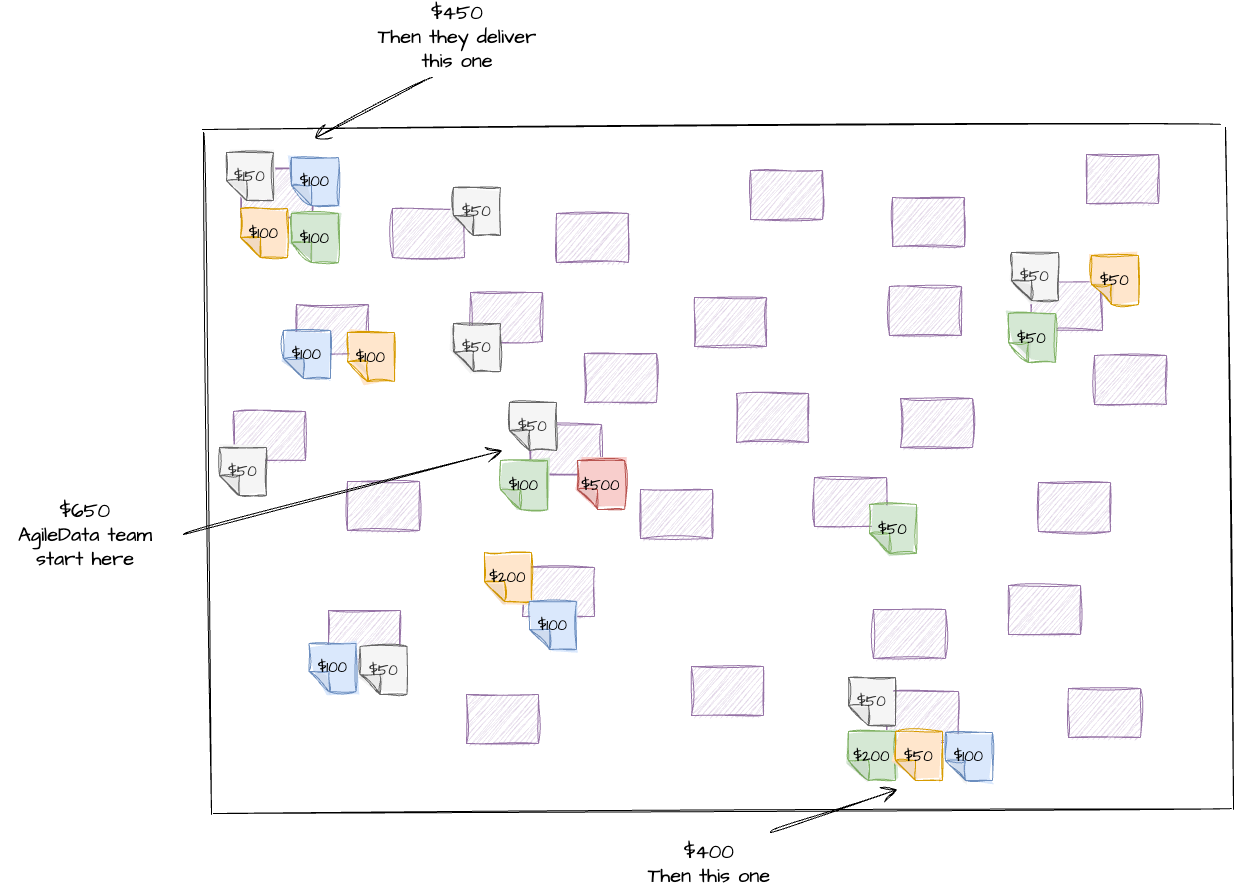500 Dollars Prioritisation Pattern
What Information Product should the Data Team design, build and deploy next?
There are a number of prioritisation patterns from the agile and product domains which have proven as being valuable when used to prioritise work in the data domain.
One of these is the 500 Dollars prioritisation pattern.
This is another one of my favourite patterns to help stakeholders define the priority of the data work to be delivered.
We use the Information Product Canvas as the input for this prioritisation pattern.
500 Dollars Prioritisation
The $500 Prioritisation pattern storming is a simple and creative way for stakeholders to prioritise the highest-value data work. By allocating a virtual $500 budget to each stakeholder, it encourages critical thinking using a constraints pattern, forcing stakeholders to clarify what matters most.
Each stakeholder is allocated 500 virtual dollars to represent the data team’s constrained capacity, whether constrained in time, money, or effort. Stakeholders evaluate each Information Product Canvas and “spend” portions of their virtual dollars based on it’s perceived value to their part of the organisation. High-value Information Product Canvas cards receive larger amounts, while less impactful ones may receive little or nothing.
To start, create a representation of the $500, using physical items like Monopoly money or virtual tools such as post-it notes, then prepare cards for each Information Product Canvas. The cards should included key details like the product name, vision, or outcomes to help stakeholders quickly understand their value.
During the workshop, stakeholders distribute their virtual dollars across the cards individually or collaboratively. Discussions about trade-offs and impact ensure transparency and consensus, the $500 limit per stakeholder guarantees that only the most valuable Information Products are prioritised.
Once the allocations are finalised, the data team begins work on the Information Product with the highest total allocation. Once the Information Product is delivered, they move on to the next highest-priority item, as determined by the virtual dollar allocations.
This prioritisation pattern storming process is repeated periodically, allowing data priorities to change as organisational needs evolve.
The $500 Prioritisation pattern is an engaging, transparent, and iterative approach that leverages constraints and collaboration to ensure data efforts consistently deliver maximum value.
Eisenhower Matrix
The $500 pattern is based on the Eisenhower Matrix pattern where we put in place a forcing function to ensure stakeholders identify a small number of things that are the highest priority and should be worked on next.
The Eisenhower Matrix, also known as the Urgency-Importance Matrix, is a simple two-by-two matrix that helps prioritise work based on their urgency and importance. Work is divided into four categories: Urgent and Important, Important but Not Urgent, Urgent but Not Important, and Not Urgent or Important.





